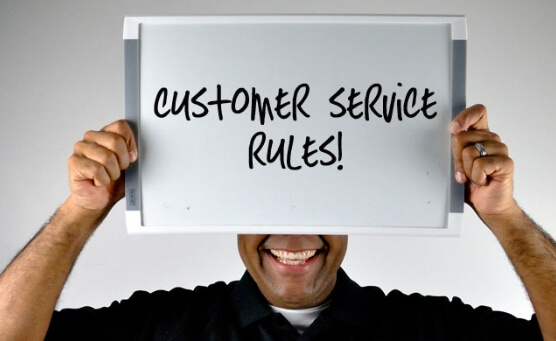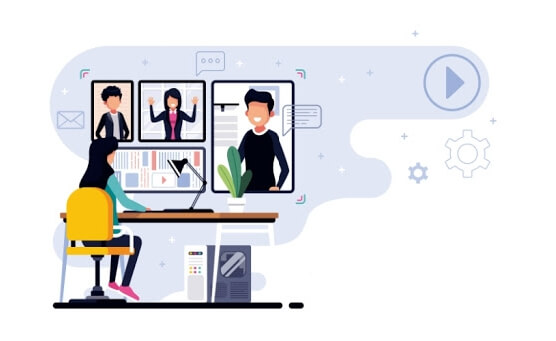Communication is a two-way street, especially with your customers

They say, a bird in hand is worth two in the bush. In business-speak, this refers to the researched fact that it’s 6 to 7 times more expensive to attract a new customer than to retain an existing one. In other words, a wise company will focus strongly on keeping those already within its fold as happy as possible. And we all know that keeping customers happy isn’t always easy.
In fact, remember that time when you had an awful customer experience and didn’t tell anyone about it? Yeah, we know, that never happened. Because when it comes to poor service, or unexpected product deficiencies, or tardy doorstep deliveries, customers are very vocally indignant about it. They will tweet their annoyance, complain on Facebook, write blog posts dissing you, and then proceed to tell all their friends, family members and neighbors that your product or service is just not worth it. Naturally, this isn’t great for business.
Luckily, there are two golden rules you can follow to help you pour oil on troubled waters. Bear in mind that these won’t solve your customer relationship issues right away, but they are a step in the right direction. There are, of course, many important rules when it comes to customer service, but these two are vital:
Speed: When it comes to responding to customer inquiries or complaints, be as quick as possible.
Imagine that you own a small but popular electronics goods store. You send out an email to your customer base about a sale featuring attractive discounts. Unfortunately, your communication neglects to mention that your shop is closed on Sundays. One eager customer turns up on the day you’ve downed your shutters and is very disappointed.
You don’t even know about this irate individual until you see his angry rant on your Facebook page, that has for some reason garnered 500 likes and the sympathy of a growing number of readers.
So what do you do?
Respond. Apologize. Implement damage control. That’s what you do and you do it quickly. Before other readers have a chance to jump in and wallow in the reviewer’s drama. We cannot emphasize this enough – it’s essential that you respond to the complaint as fast as you can, Usain Bolt-style. It may surprise you to learn that according to a survey of social media users, by the joint Nielsen-McKinsey venture NM Incite, 33% of respondents said they’d recommend a brand that offered a quick but ineffective response, while only 17% said they’d recommend a brand that provided a slow but effective solution. If this doesn’t prove the need for speed when addressing customer complaints, I don’t know what does.
At the consumer’s end, the need for speed translates into a demand for information and functionality at their fingertips. Today, customers are used to getting what they want with the click of a button, or the touch of the ‘enter’ key. They have high expectations and little patience. They seek instant gratification and apart from demanding speedy resolution of issues, they also expect to be able to get in touch with you quickly and easily.
Easy access to you through multiple channels of communication.
You must let customers know that they can conveniently reach you, through a website, or an email id, or a social media page, or better still, a toll-free phone number. Highlight communication links and numbers in all your messaging to them. Assure them that they can even get in touch with you when they are on the move. This could be for information, or to place complaints, or even to give you feedback. In other words, keep many communication channels open and accessible.
Now, let’s revisit the above example. Perhaps the social media hubbub caused by the unhappy customer, could have been averted with one simple move. What if the email promoting the sale, had also highlighted a toll-free number to call for information? Perhaps the customer could have called to check on store timings and days of operations, and thus been better informed.
By the way, just in case you’re reading this and thinking to yourself that phone calls are an outdated mode of communication for customers, think again. According to a study done by Forrester’s Kate Leggett, in 2013, “Voice is still the most widely used channel, with a 73% utilization rate. This percentage has not changed in the last 3 years.”
That’s also the reason ‘click-to-call’ buttons on mobile advertisements are becoming so popular. There are thousands of customers who own smart phones and use them to search for products or services. When they find what they are looking for, all they need to do is click to call the company right away to ask a question, or place an order. In other words, companies are giving customers easier access to their business, even when they are on the move.
All this isn’t as complicated as it may sound. The introduction of cloud telephony services has done away with the hassle, and costs related to implementing your own telecom infrastructure. Phone numbers are easily available and charges are really affordable. So, there’s really no excuse for any business, small, medium, or large, to leave voice services out of their customer service strategy. With convenient features like IVR (Interactive Voice Response), voicemail, and call recording, you won’t even ever miss a customer call. You can always call back and show them how important they are to your business.
Don’t forget. Follow the two golden rules and you’ll be well on your way to wiping the frowns off a few customer faces.
Knowlarity’s SuperReceptionist product has been helping small and medium businesses around the country stay in touch with their customers to improve customer satisfaction. Click here to learn more.
Image credit: thetopguitars.com
Written By: Admin

